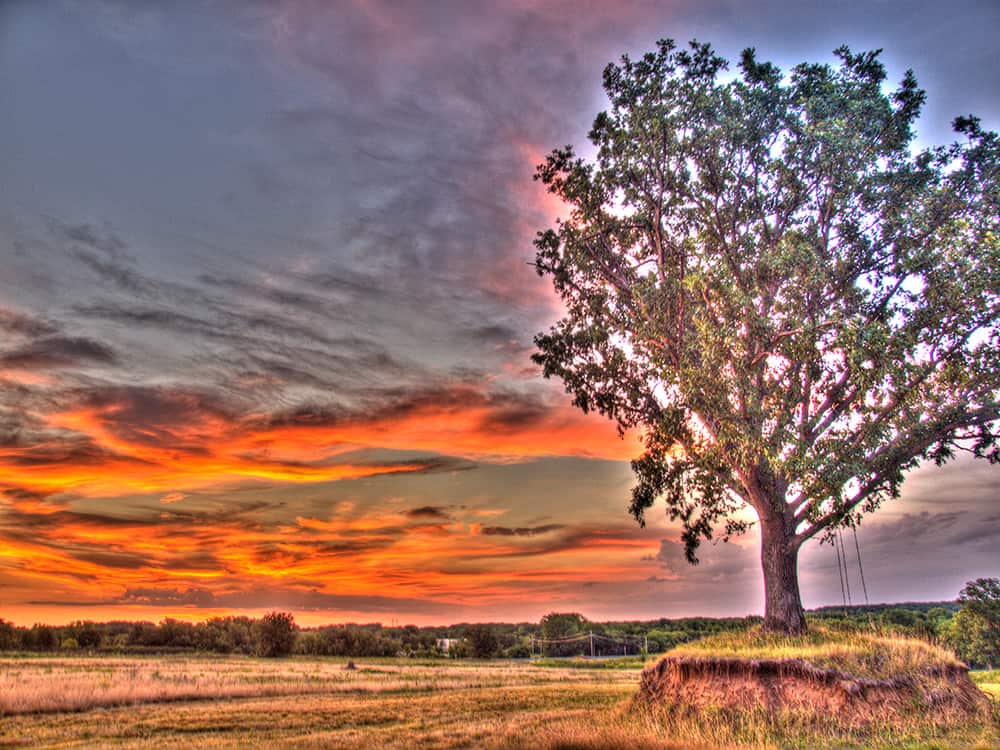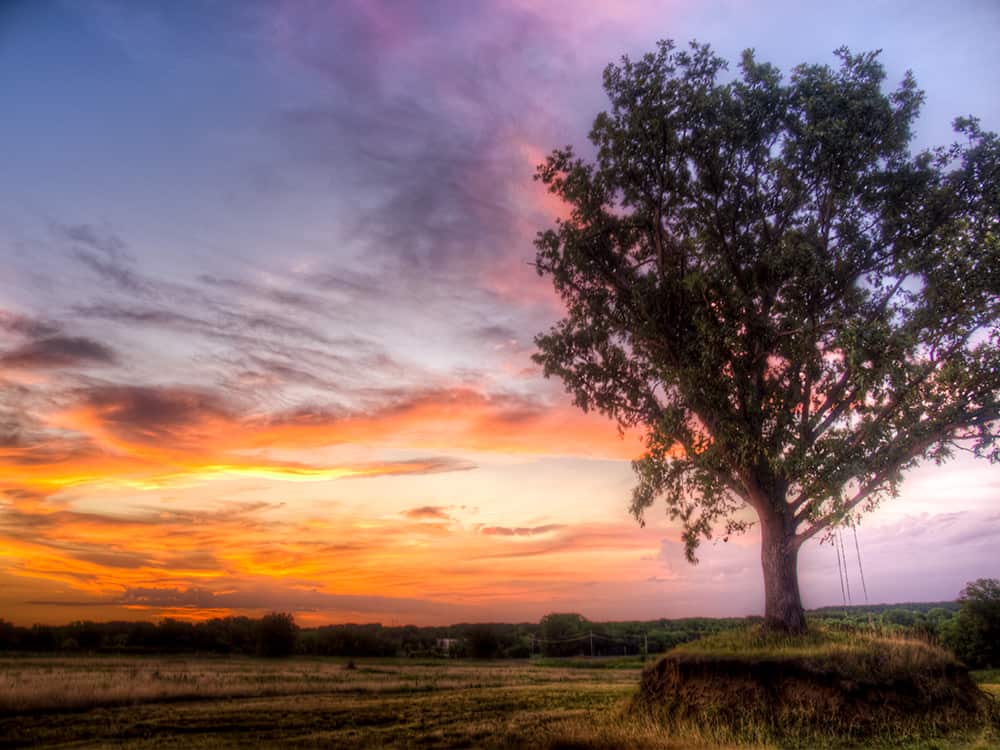Making great images with Photomatix Pro 5
A few years ago I used Photomatix Pro to made a YouTube tutorial called Over Saturated HDR Crap! I didn’t mean to offend anyone, I was just trying to open some eyes to some things that made HDR images look, well, bad! Recently, an individual didn’t take too kindly to it in the comments. I had to try and calm the seas, but eventually gave up. Part of his complaint is that I was trying to put a set of ‘Rules’ to art. Somehow a God complex got discussed as well as some form of communism and that is where I stopped commenting back!
However, that conversation had me thinking all week long about the video I had created 2 years ago. I asked myself things like,
- “Was I off base?”
- “Should I take down that video?”
- “Are there some set rules to HDR & Photography?”
- “Am I a Communist?”
But after answering, “No” to all of those questions (especially the last one) I began to think about ways that I could have addressed that video a little better. I rattled the peas around in my head and came up with 5 tips for tone mapping in Photomatix Pro. I know I discuss these things in a lot of my videos, some are here, some are there, but here they are in one concise video rather than all over the place. Let me reiterate, these are not ‘rules’… they are tips… please don’t throw tomatoes at me and call me a Communist!


5 HDR Tips for Photomatix Pro 5.0
- Presets are not always the best option. Dynamic Range changes drastically from one image to the next. A preset can be used as a baseline, but very rarely do they make a ‘one and done’ image.
- The Lighting Effects Mode is not nearly as powerful as the Lighting Adjustments Slider. Let’s face it, having 11 increments (and more) on one slider is more forgiving than 5 quick adjustments (Natural, Natural+, Medium, Surreal, and Surreal+). I have never met an HDR image that deserved a Surreal+ slap in the face!
- Working From Top to Bottom is the best idea when tone mapping an image. Usually I keep the top the same at all times, 100, 50, 10, 10. Then I work my way down paying the most attention to the Lighting Adjustments and the Highlight Smoothness.
- Over saturating in Photomatix Pro with the Saturation slider is always a BAD idea! There are so many tools for saturation after Photomatix. It is not a good idea to over-saturate in Photomatix because you do not have any control over the colors that are being manipulated.
- Photomatix Pro should be looked at as a Means to an End, Not the End All Be All!!! You wouldn’t build a bench with just a hammer, why would a photograph be any different? Use the tools you have to craft your images and don’t look at any one tool as the end all be all!
Here is the video tutorial covering the 5 tips above and MUCH more!










Well you can’t please everyone all the time but I’d say you manage your fair share – perhaps the other guy doesn’t have someone to please and with that kind of attitude it wouldn’t surprise me.
To the video – to say it’s your best to date on HDR would almost be an understatement, at least IMHO, but I’d say there’s also some ‘gems’ in there that go beyond HDR – well worth the listen.
steve
Isn’t that the truth! It is hard to please them all!
Okay, best outside of HDR Insider 🙂 Let me clarify!
Thanks for checking it out!
This was incredibly helpful, thank you so much Blake.
Great! So glad you liked it!
Thank you so much for sharing and teaching us your knowledge. This “lesson” is really helpful. Often one knows what they visually want to express, but don’t know how to get there. This is so helpful.
Not a problem! I am glad I could help you ‘see’ it 🙂
Sadly Narcissm is rampant in photography Blake.
Since stumbling onto you tutorials on Youtube , my photography has developed to a level i never dreamed of. Your passion for teaching people is so infectious, you could keep all your secrets to yourself, but no, you are generous in your giving. Take it from me, you ARE the master of HDR and post processing.we must thank our lucky stars that you developed the digital zone system and color zone system . Keep up the good work mate. I continually sing your praises to all and sundry here down under.
Thanks Michael! That means a lot. I really try not to hold anything back. I have become addicted to sharing it all. It is very rewarding hearing comments like yours and watching how you have progressed after all these years. You are crushing your photos!
The sound track on this video does not play on my MacPro. I have several speaker systems available on this computer, and none of them play the soundtrack. Other sound sources do play at their normal volume.
is it me, or is there something wrong in the YouTube pipeline?
I think it is YouTube. It worked fine for me last night, didn’t this morning but then did this afternoon. Not sure what they are doing over there. It does it with some of my older videos too.
Have you tried another browser?
Yes, it is the old story – if you want to get from A to B there may be many roads to take, but you must always ensure you are on the correct side of that road!
Very good analogy! I love it!
Thanks Blake, that really clarified what I should and should not be doing with Photomatix and good reasons for why it is better done in Camera Raw. P.S. It was enlightening enough I did not need the popcorn you thought might be adviseable because of the length,
Good stuff! Glad it was enlightening. Camera Raw is so powerful with HDR!
Blake, you do a terrific job with your videos. I’ve only “known” you for a few months, but I’m using the Digital Zone System & Color Zone System more and more.
I don’t do a whole lot of HDR processing and don’t own Photomatix but I’m wondering if the way you use Photomatix, basically for tone mapping, couldn’t be accomplished just as effectively, perhaps even more so, using Photoshop CC’s HDR Pro? I suggest this because it will tone map into a 32 bit image that ACR and LR can now handle. Then, back in Photoshop after you have enhanced the image, you can convert it into a 16 bit one and pretty much maintain the look of the image in 16 bits by tweaking it under Image>Adjustments>HDR Toning.
I’ve tried this a few times and it works well for me. Just a suggestion for those who don’t own Photomatix.
Thanks for the feedback John!
It could be accomplished with 32 bit processing in Photoshop and ACR. I do use that from time to time. However, I find I get a better product for my liking with Photomatix. This is merely a personal preference. Sometimes 32 bit works wonders and is better than Photomatix, espeiclaly with night time scenes (for noise purposes).
I have done several 32 bit tutorials on YouTube, but since you have menitoned it, I think Imay want to address the DZS and CZS with the 32 bit workflow.
Thanks for that tutorial, Blake! Can’t wait to experiment with your tips in Photomatix Pro and Lightroom.
One thing you might want to check: In your text above, you wrote that your standard settings for the top section are 100, 50, 10, 10. In the video, you said that your standard settings are 100, 50, 100, 100. Looks like the text is missing a couple of zeros.
Thanks for being so inspiring!
oops! It should be 100, 50, 10 and 10, I must have slipped in the video! The idea is to max them out!
Hello Blake,
as always a great new tutorial. Thank you for that.
Also the new look of your website looks great.
Best greetings, Harry.
Sweet! Thanks for stopping by Harry, I appreciate the feedback!
Blake…You did it again!! This video is great!! I don’t own Photomatix yet. I’m trying to slow down on wanting to absorb everything about photography at once as it will really “rattle the peas around in my head too much”..{Blake I loved this expression on your write-up so I’m using it too}. Joking aside—much gratitude Blake.I’ve pickup a lot of pointers again for improving my photos/art work using camera raw!! I really appreciate the info on the use of the graduated filter tool. Thanks much for the tips and the inspiration!!
No problem! I am just glad I could help you out. I can never hear that enough, that is the most rewartding part about this job.
I rattle the peas around until they clang together a couple of times, then sparks fly 🙂
Hi Blake….. thanks for yet another awesome Tutorial.
I love the way you teach, and following your Videos listening to you makes the whole learning process so easy to understand.
Thank You 🙂
Thanks, Maxine. That means a lot to me to hear great feedback like that!
Excellent Tutorial as usual, Blake. As always, I learned several new tips I never knew before. Thank you very much.
One question if I may: Do you typically stay with The Photomatix “Tone Mapping” Process and the “Detail Enhancer” Method rather than the other options such as:
“Exposure Fusion” Process and the other Methods such as “Contrast Optimizer” and “Tone Compressor”, etc.?
Thanks,
Vinny
Thank Vinny!
I typically stick wit hthe Tone Mapping under Detail Enhancer. I seem to get the best results that way. That matches my style pretty well, however, the other options work pretty well also.
Now that you mention it, I think I want to try using some of the other options more often!
Sound advice. I’d recommend anyone starting out to watch this video. There’s a tendency to overdo the HDR effect when starting out. I certainly did but now try and achieve a more natural look. I use Photomatix Esssential, a less expensive version with a reduced but similar degree of control, then use PSE11 with various Topaz plug-ins. Not felt the need, yet, to use RAW though I do sometimes save in JPEG + RAW if lighting conditions are difficult but tend to rely on 3x or 5x AEB exposures to increase the chance of a best exposure or to catch extremes of light and shadow, especially on church interiors and stained glass – here’s one https://www.flickr.com/photos/dieselgolfer/15134975971/
That is a gorgeous photo! Very well processed and very mild on the HDR treatment. That, to me, is great HDR!
Thanks for checking out the tutorial and sharing your image with us!
Very informative tutorial. On occasion, I use Contrast Optimizer in Photomatix and get a better starting point for the rest of the process in ACR and other plug-ins. If I can’t get Detail Enhancer to get the image the way I want then I will try Contrast Optimizer. Usually I can get one of these to get my starting point for the rest of the process. Thanks again for a very informative tutorial. Very helpful information.
Blake- Thanks again for the tutorial. Sorry to hear that someone felt the need to rag you about something creative. They have yet to learn that in the creative process, the same thing can be done many different ways, and each of them can be correct. Beauty is in the eyes of the beholder! Add “creator” to that too… Your information is always good and something to build on. I appreciate the effort you make to help us all become better photographers and artists. Keep up the good work!
Thanks Tom! I appreciate the feedback. I try not to take it to heart, the internet being so one way and all. However, sometimes I wonder if maybe they are right in their reaction. Either way, I will keep on creating so long as you do as well!
This step-by-step tutorial was a HUGE help. Thanks!
No problem Joey! Just glad I could help!
Thank you,Blake,a terrific tutorial. Learnt a lot from it.
Ray
So glad I could help! Thanks for stopping by and checking it out!
Great timing. You just solved the biggest problem that I’ve been having with HDR. Thank you
I understand the need to defend yourself. There are some people who simply can not just listen to advice and then keep what they agree with, and simply leave the rest. I prefer to keep an open mind and listen to all advice. I just throw away what I don’t like. Please keep up what you’re doing. We appreciate it.
Awesome! Glad I could help!
It is tricky dealing with the multitude of personalities on the web. I don’t mind much, it bugs me at first, but then I shrug it off. I have found that taking an extra few hours to think about a negative comment helps me respond without a heated emotional response.
Thanks for the confidence boost! I will keep on doing what I am doing, for sure!